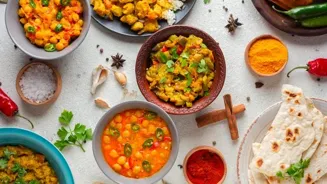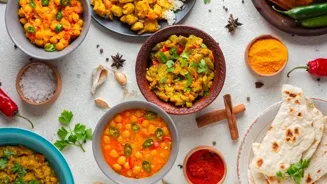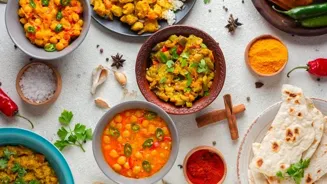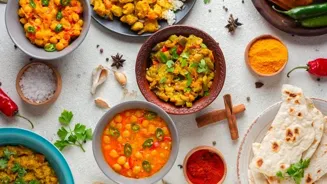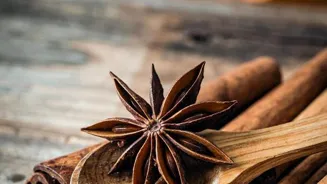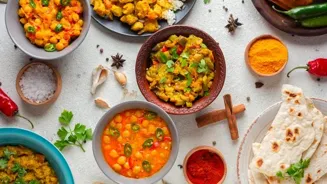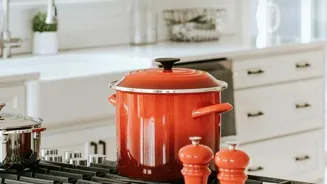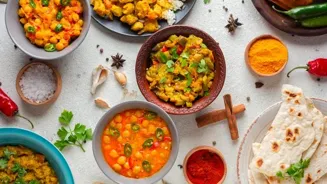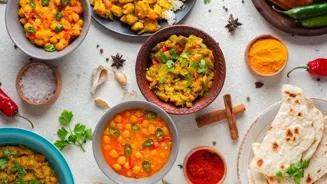Discover the magic of Indian cooking with these 10 essential ingredients. Elevate your dishes with vibrant flavors and aromatic spices. Read on to learn how these key elements can transform your home cooking experience.
From turmeric to garam masala, each ingredient plays a crucial role in creating authentic and delicious Indian dishes. Get ready to embark on a flavorful journey and unlock the secrets of Indian cuisine
Namaste, food lovers! If you've ever dreamt of recreating the magic of Indian cuisine in your own kitchen, you've come to the right place. Indian cooking, with its vibrant flavours and aromatic spices, can seem intimidating at first.
But trust us, with a few key ingredients and a little practice, you'll be whipping up delicious and authentic dishes in no time. So, ditch the takeaway menus and get ready to embark on a flavorful journey with these 10 essential ingredients that form the backbone of Indian cooking.
They can elevate any simple recipe to another level. With these in you pantry, you can create a variety of Indian vegetarian dishes that would give you a restaurant like experience at home.
From curries and lentils to vegetable sides and snacks, these will let you experiment with a wide variety of recipes.
Turmeric: Versatile spice with health benefits in Indian cooking
First up, we have the ever-versatile Turmeric (Haldi). This golden spice isn't just about adding a vibrant colour to your dishes; it's also packed with health benefits, thanks to its active compound, curcumin.
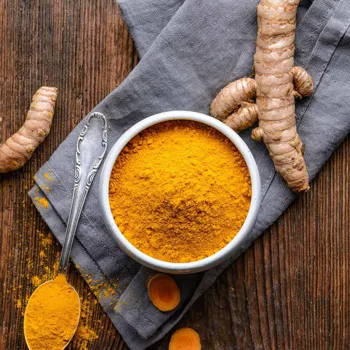
Turmeric boasts anti-inflammatory and antioxidant properties, making it a must-have in your spice rack. In Indian cooking, turmeric is used extensively in curries, lentil dishes (dals), and vegetable preparations. A pinch of turmeric adds a warm, earthy note and a beautiful golden hue.
It is also often added to marinades and used as a key ingredient in various spice blends. Buy it either as a powder or as the raw root, which can be peeled and grated. Fresh turmeric adds a lovely, zesty note.
Ghee: Rich, nutty clarified butter ideal for cooking and sacred in Indian culture
Next is Ghee (Clarified Butter). This golden liquid is more than just butter; it's butter that has been simmered to remove the milk solids, leaving behind a rich, nutty flavour. Ghee has a high smoke point, making it ideal for sautéing and deep-frying.
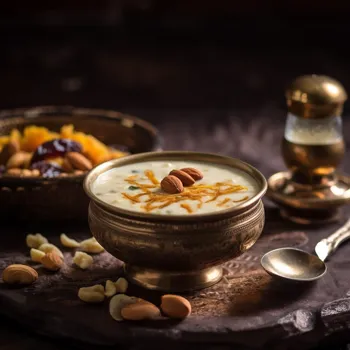
It's also considered sacred in Indian culture and is used in many religious ceremonies. In cooking, ghee is used to temper spices, add richness to dals, and even drizzle over roti or rice. Some people think it makes anything taste better.
Its rich flavor profile enhances the overall taste of a dish. Making your own ghee needs time and patience. It requires gentle simmering to separate the butter fats from the milk solids.
Indian cuisine relies on ginger and garlic as essential flavor base
Don't forget Ginger and Garlic. This dynamic duo is the foundation of almost every Indian dish. Ginger adds a warm, slightly spicy flavour, while garlic brings a pungent and robust aroma. Together, they create a harmonious base that complements other spices beautifully.
Ginger and garlic paste is a staple in most Indian households. You can easily make this at home by blending equal parts ginger and garlic with a little water. This paste can then be stored in the refrigerator for several days.
Apart from the paste, both ingredients can also be used fresh, chopped finely and added to a dish in the same way.
Cumin: versatile spice adding warmth to dishes
Another important ingredient is Cumin (Jeera). These tiny seeds pack a powerful punch of flavour. Cumin is warm, earthy, and slightly bitter. It's used in its whole form to temper oil, or ground into a powder and added to curries, stews, and spice blends.
To enhance the flavour of cumin, lightly toast the seeds in a dry pan before grinding. This brings out their aroma and adds a nutty note. Cumin powder is a key ingredient in garam masala, a popular Indian spice blend. Roasted cumin powder also adds a unique flavor when sprinkled over raita.
Coriander: Essential spice in Indian cuisine, adds freshness and aroma to dishes
Coriander (Dhania) is another key ingredient. Coriander is one of the most important ingredients, it is the most used one. It is an essential spice, and the fresh leaves give the dish a wonderful aroma. The seeds can be dry roasted and grounded.
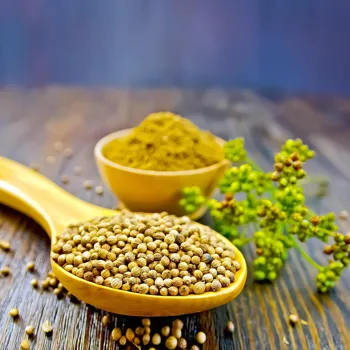
The seed is an indispensable ingredient for preparing curry powders or Garam Masala. Coriander brings to the dish a freshness and balances out all other spices. Powdered coriander is a staple and is used in almost all Indian dishes. The fresh leaves are used for garnishing the dishes.
Adding the fresh leaves after cooking helps maintain the aroma.
Indian kitchen staple: Garam Masala, a blend adding warmth to dishes
Finally, Garam Masala. No Indian kitchen is complete without a jar of garam masala. This is not one spice but a mixture of ground spices. The mixture vary but it often includes coriander, cumin, cardamom, black pepper, cinnamon, cloves and nutmeg. Garam masala adds warmth and complexity to any dish.
It is usually added towards the end of cooking to retain its aroma. Every household probably has a unique recipe for Garam Masala. The ready made blend of spices has made an easier access to the spice mix. This is one of the most important spice blend and is widely used everyday.
Foundation ingredients for Indian cooking, experiment and enjoy flavors
These ten ingredients are just the starting point of Indian cuisines. These are a great foundation for building your Indian cooking skills. Once you have mastered the use and feel of these, experiment with other spices and ingredients.
Do not hesitate to try different recipes, and adjust the spices to your liking. With patience and passion, you would be able to recreate any Indian recipe. The most important thing is to enjoy the journey and savor the delicious flavors of India! Happy Cooking.
